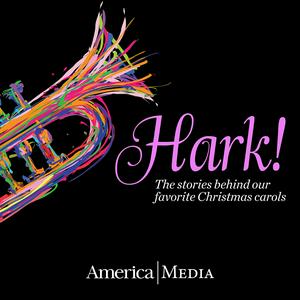What Child Is This?
On the final episode of Hark! this season, prepare yourselves for a wee bit of scandal because we’re looking at a tune that began as a bawdy love song and has long been associated with an evil monarch, but which, over the course of three centuries, finds its redemption as a Christmas carol. This is the story behind, “What Child Is This?”
Please complete our brief survey to share your hopes for Hark! and to let us know which carols you’d love us to feature next year.
“What Child Is This” may have been derived from a Christmas poem by William Chatteron Dix in the mid 19th century, but its musical roots stretch as far back as the 16th century, when its famous tune, “Greensleeves,” was circulated in Europe’s royal courts.
In an attempt to track the tune’s composer, and separate fact from fiction, Maggi Van Dorn brings on Milton Mermikides, the 37th Gresham Professor of Music at Gresham College, London.
Maggi is then joined by Richard Jeffrey-Gray, head of the music service for the Diocese of Clifton, Bristol, United Kingdom, who traces how the romantic ballad “Greensleeves” became the Christmas carol “What Child Is This,” along with what makes this, according to Richard, “one of the most, perfect tunes to to play and to sing.”
Susan Reynolds, a theologian at the Candler School of Theology at Emory University and mom of three girls, unpacks the rhetorical structure of the song’s lyrics and its profound theological implications for our world today.
The music featured on this episode was generously gifted to Hark! by Clifton Cathedral Choir, Bristol, U.K.; Nicholas Steinbach and Grey Duck Music; Holland Albright; Cynthia Boener; Michael Logozar and Brian Thiessen. With special thanks to Signum Records for providing renditions of the carol "What Child Is This" by the following artists signed to their label: King’s Singers, Armonico Consort, Matthew Barley and The London Cello Sound, featuring the 40 cellos of the London Philharmonic, Royal Philharmonic, BBC Symphony, and Philharmonia Orchestras.
Support Hark! by becoming a digital subscriber to America Magazine at: americamagazine.org/subscribe
This season of Hark! is sponsored by Saints for Sinners, offering divine saint medals imported from Italy and meticulously hand-painted in New Orleans.
Learn more about your ad choices. Visit megaphone.fm/adchoices

